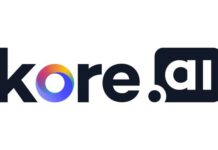Embracing any technology depends on the readiness and maturity to solve problem statements and industry priorities. Speaking about the auto industry, one way to find the fit for any technological innovation is to look at its value chain. For this approach, we can disintegrate it into three key pillars of approach— people, process, and product-driven. Let’s have a brief understanding of each:
People-Centric Approach: Involves employee learning & training, customer experience, and supply chain partners.
Process-Centric Approach: Entails design, collaboration, manufacturing, and quality control across varying processes in the automotive industry.
Product-Centric Approach: Enhancing the core product (car) and augmenting it with XR capabilities.
For any technology to become mainstream, it is critical to build focus and link its use cases with the proper KPIs focusing on driving long-term value. However, it is also pertinent that, given the evolving nature of technology and user behavior, there be openness to experimentation and business imperative to drive innovation.
In this regard, Metaverse holds a promise of transformation for the auto industry. It is the fourth wave of networking and computing, per Matthew Ball, one of the biggest proponents of Metaverse, and is already here.
How Automotive Industry Exhibits a Perfect-fit With the Metaverse
The global automotive industry has been through many ups and downs, and the arrival of COVID-19 has severely impacted the prolonged slowdown since 2017. The fewer sales across the global markets and the further limitations of the pandemic have made the auto industry leaders rethink and reestablish their strategy with the modern approach of direct to the customer. It has led to the global disruption of traditional car buying.
Now talking about the process of car buying from the consumer perspective, it’s an aspirational product, which is high-price and shallow frequency, and whose purchase journey entails multiple stages, touch points, and stakeholders.
From the standpoint of automotive brands, it’s about rejuvenating this aspiration with the modern approach to marketing and continuous investment in newer technologies. From the induction of highly advanced safety mechanisms to the unparalleled human-machine interface—the automotive industry, since its inception, has proven to be the early adopter of new technologies.
When we say early adoption of technology, we cannot miss mentioning the outcome of web 2.0. Whereas for the other industries (fashion, beauty, finance, information technology, and more), web 2.0 proved to be a boon to boom, getting the best of online commerce. However, the auto industry could not meet customer experience and purchase journey requirements. There was an increased dependency on offline (physical) showrooms.
Here comes the big picture of the Metaverse. With big brands such as Tesla and Mercedes showing signs of direct-to-customer (DTC), the Metaverse holds the most significant opportunity for the automotive industry. The scope of expansion is immense, and it’s time to focus on the actual assets of the industry—its customers. The customer experience is the most critical area to invest in and stay ahead of the competition. With Metaverse, customers can visualize, experience, and interact in newer and more effective ways—making the car buying a genuinely immersive journey and DTC a clear winner. It’s a call to adopt before it’s too late.
Making the Metaverse Work for Automobile
It’s essential to understand the nuances of brands and customers. There is a need to address this to enable adoption at a large scale. For automotive brands, it requires thinking about their identity and how Metaverse-led content will augment it. For one, photorealism is a critical need since the realism of graphics directly affects the consumer’s perception of the product, and brands cannot afford to compromise here.
Likewise, the aspects of user privacy need attention and compliance with the evolving landscape of data rights globally. Brands must focus on devising their marketing spend and dedicating a portion to their metaverse investments. It helps integrate their identity and value proposition into the metaverse experiences.
With evolving consumer behavior, it is crucial to invest in initiatives built upon user insights and take an informed approach toward product and design, which enables the adoption of the Metaverse and increases the engagement of users. It is imperative since most virtual world experiences were focused on the gamers community using desktops and game consoles.
In contrast, with the ensuing adoption of the Metaverse, the experiences have to provide a smooth learning curve to the audience and take care of prevalent form factors like the mobile. Failure to do this would mean a flawed investment and lead to a lost opportunity for the brands to turn the tide of the Metaverse in their favor. Lastly, the success of the Metaverse would also depend on giving users a personalized, socialized, and gamified experience.
Present-day consumers, especially GenZ, seek a powerful, best-in-the-industry virtual experience throughout the buying journey and across all touch points. Metaverse provides a new and immersive way of car promotion and sales.
Right Approach for the Auto Brands in the Metaverse
The augmented reality in the Metaverse solves present-day problems, say, whether the car will fit in the parking space and information about the elevation of the vehicle from the ground. At the same time, the immersive 3D assets provide the vehicle’s authentic look and feel, and the configurator-led customization makes it possible to personalize as per the user. Primary user research data shows consumers are already buying cars online using the metaverse experiences. The more digital savvy among them, like the GenZ, are looking for more ways to engage with their choice of brand virtually, like via participating in launch events or purchasing virtual assets.
Association with 3D/XR campaigns raises product awareness and builds aspiration. The amalgamation of a car and the brand in the Metaverse is limitless. With richer digital ecosystems in the Metaverse, automakers can start to introduce a more fluid and seamless experience even after the purchase.
The aspiration with Metaverse surrounds the ability to personalize, socialize, and gamify the customer experience. It can be even more immersive by incorporating virtual test drives (VTD) and technological advancement to compare multiple vehicles within the virtual showroom in 3D/AR.
In addition to solving the current problems of the industry, Metaverse is also opening new frontiers for automobiles with the advent of virtual asset sales in the form of NFTs, driving brand loyalty and presenting a new source of revenue, and more unexplored possibilities in the form of hardware compatibility of Metaverse experiences with VR, AR lens, haptics, and other wearables.
Wrapping Up!
Brands need to focus on building their metaverse strategy and actively pursuing it. There are many low-hanging fruits with the Virtual Events, building awareness via Non-Fungible Tokens (NFT), Virtual Test Drives (VTD), and Member Exclusive launches. Brands also need to work on the opportunity of Virtual Commerce with multi-car showrooms, 3D configurators, XR, and real-time car comparison.
Auto OEMs must be able to engage with the consumer who is digitally and technically aware. Brands need to position their organization as innovation-led regarding the Metaverse. In doing so, it is necessary to focus on the brand identity and its relationship with the consumers. Brands need to partner with those who are working on making metaverse work for the automotive industry by focusing on the nuances of technology, use cases, and the customer, and have shown credibility & results in the past. The Metaverse is here to stay, and early adopters will have the benefit of capitalizing on opportunities as soon as they arise.
About the author:

Kanav Singla, Founder & CEO at Metadome.ai















